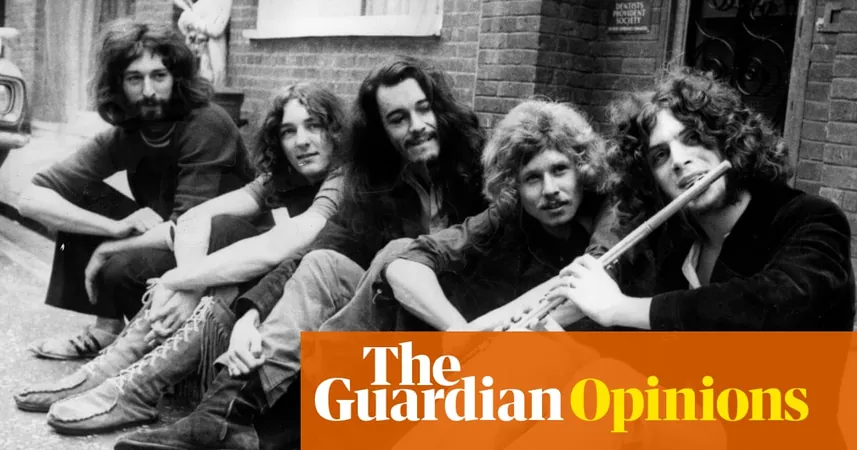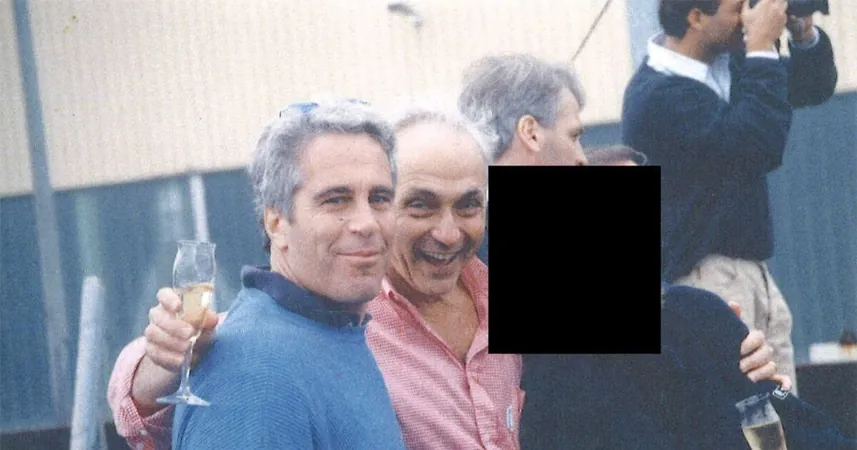
Rick Davies: The Quirky Genius Behind Supertramp's Unique Sound
2025-09-09
Author: Ying
The Unlikely Co-Founder of Supertramp
Imagine being a co-founder of a legendary band, yet performing songs you didn’t write or originally intend to play! That’s the odd paradox faced by Rick Davies, who birthed Supertramp alongside Roger Hodgson in 1970. When Hodgson departed in 1983, he took his iconic hits with him—forcing Davies into a position where he had to play the very tracks that defined the band's success, much to Hodgson's displeasure.
A Musical Duel: Jazz Meets Pop
The creative push and pull between Davies and Hodgson was the heart of Supertramp. While Davies leaned into jazz and blues, Hodgson was the pop maestro. This blend crafted the distinctive Supertramp sound: Hodgson’s soaring tenor paired with Davies’ masterful keyboard work. Though Hodgson penned the famed hits, it was Davies who shaped their essence. He had his own collection of songs that added layers to their repertoire.
Class and Background: A Tale of Two Upbringings
The duo’s contrasting backgrounds also played a role in their dynamic. Hodgson was a privileged schoolboy, while Davies, son of a hairdresser and merchant seaman from Swindon, scrambled through tough school years, except for music classes. His musical inspiration struck at age eight when he discovered Gene Krupa's "Drummin’ Man," igniting a passion that evolved through local rock bands and the transformative meeting with Hodgson in 1969.
Finding Their Identity: The Rise of Supertramp
Emerging alongside an array of British bands in the 70s, Supertramp carved a unique niche, often defying categorization. Were they an arty pop band or something else altogether? Their initial albums struggled to impress until the breakthrough with 1974’s "Crime of the Century," which showcased their eclectic flair.
A Band That Quietly Stood Apart
Supertramp adopted an understated public persona, avoiding the traditional rock star image. They shunned flashy album covers and dramatic appearances. Critics noted their 'boring' public image—an approach that became unfashionable as the 80s rolled in.
Solo Struggles and Tensions
Post-Hodgson, both artists found it tough to match their earlier successes. Davies sought to explore complex sounds while Hodgson chased pop appeal, leading to a public fallout. Their most substantial conflict centered on the use of Hodgson's beloved hits in Davies’ touring Supertramp, which left the possibility of a reunion hanging in uncertainty.
A Quirky Legacy in Rock History
Beneath the polished surface of Supertramp’s chart-topping hits lay an unusual, quirky spirit. Tracks like "Bloody Well Right" started with jazzy improvisation and morphed into wry storytelling, capturing Davies' essence. The band’s snarky humor was evident in the 1975 album, "Crisis? What Crisis?," unexpectedly influencing British politics of the time.
A Unique Sound and a Loyal Fanbase
Davies’ standout tracks, such as "Ain’t Nobody But Me," further solidified his creative role, showcasing his talent for blending styles. However, Supertramp’s inability to fit neatly into an established genre left them overlooked in later years, even as they surged to the top in the late 70s. Yet, their loyal fanbase continues to cherish their quirks, flocking to see Rick Davies and Supertramp decades later.
Conclusion: The Misfit Icons of Rock History
In a world obsessed with flashy behavior and defined genres, Supertramp remains a unique chapter in rock history. They may not have been volatile stars; instead, they embodied the brilliant yet understated artistry that still resonates with those who hold a place in their hearts for their eclectic musical legacy.



 Brasil (PT)
Brasil (PT)
 Canada (EN)
Canada (EN)
 Chile (ES)
Chile (ES)
 Česko (CS)
Česko (CS)
 대한민국 (KO)
대한민국 (KO)
 España (ES)
España (ES)
 France (FR)
France (FR)
 Hong Kong (EN)
Hong Kong (EN)
 Italia (IT)
Italia (IT)
 日本 (JA)
日本 (JA)
 Magyarország (HU)
Magyarország (HU)
 Norge (NO)
Norge (NO)
 Polska (PL)
Polska (PL)
 Schweiz (DE)
Schweiz (DE)
 Singapore (EN)
Singapore (EN)
 Sverige (SV)
Sverige (SV)
 Suomi (FI)
Suomi (FI)
 Türkiye (TR)
Türkiye (TR)
 الإمارات العربية المتحدة (AR)
الإمارات العربية المتحدة (AR)